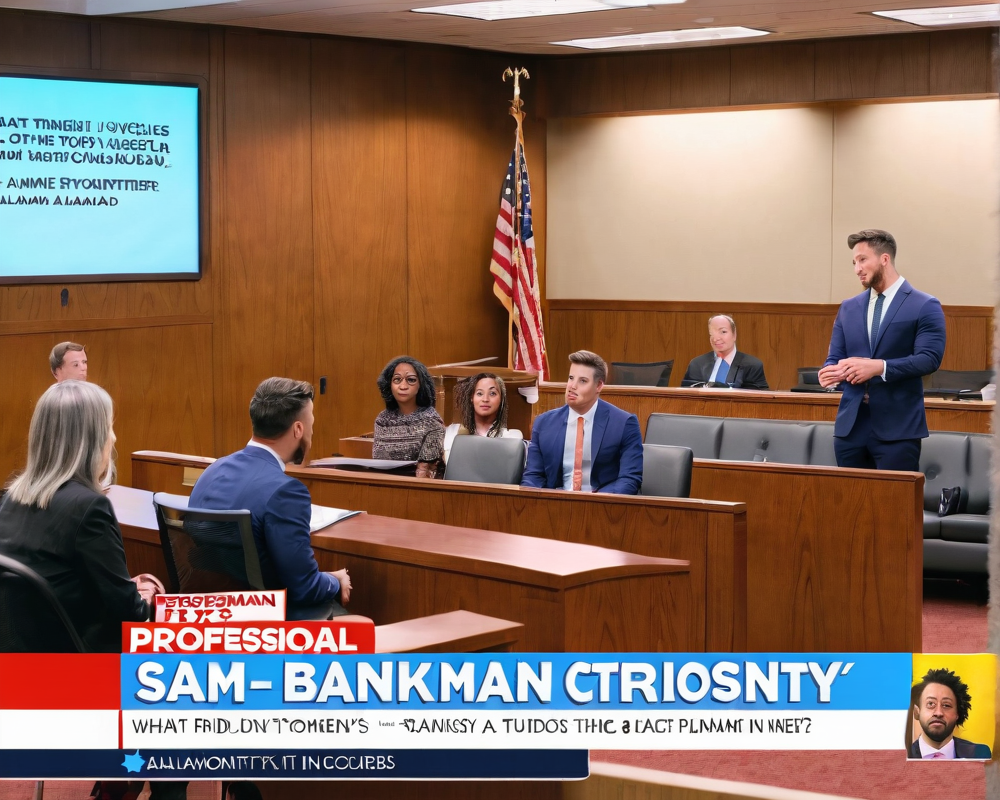Welcome to the SBF Show: Drama Unfolds
Sam Bankman-Fried, the once-mighty king of crypto, took the stand this week at his trial in New York, and boy, was it a courtroom spectacle. On October 27, the former FTX CEO decided to speak up—sort of like a cat deciding to jump onto the keyboard while you’re trying to work. He denied any wrongdoing amidst a whirlwind of accusations about his former reign over FTX and Alameda Research, admitting he made a few ‘big mistakes’ but insisting he wasn’t breaking any laws. Sounds like classic ‘I didn’t mean to’ material, right?
Political Contributions and the Art of Denial
First on the docket was Bankman-Fried’s alleged involvement in funneling millions into political campaigns. He repeatedly denied directing his team to dish out the dough to politicians, but his teammates weren’t quite as coy. Nishad Singh and Ryan Salame both reportedly made hefty donations, raising eyebrows and, more importantly, prosecutors’ suspicions. SBF claimed these donations came from FTX’s “own funds,” a comforting spin given his precarious financial history. Isn’t it strange how an alleged two-faced crypto magician can turn donations into something less nefarious?
Lessons from the New York Times
Here’s a fun nugget from the trial: Bankman-Fried had a personal guideline for FTX communications called the New York Times Test. This mandate dictated that employees should think twice before sending any messages they wouldn’t want splashed across the front page of a major paper. They even had an autodelete policy on Signal — 200 channels were under this interesting regime. I mean, who needs to worry about transparency when you can just vanish incriminating messages?
Alameda – The Money Magic Behind FTX
Bankman-Fried further illuminated the unique role Alameda played in FTX, essentially acting as the Great and Powerful Oz behind the curtain. Alameda was not only a liquidity superhero, but served as a payment processor while FTX was “winging it” in the finance arena. Alameda’s generous line of credit meant they could cover losses, even when FTX’s risk engine had its off days. Imagine being the kid who gets to borrow money without ever having to pay it back—this was how crypto felt during the bull market.
The Downfall: Lack of Hedging Strategies
Perhaps the most painful part of Bankman-Fried’s testimony was when he dropped the bomb about hedging strategies (or lack thereof, more accurately). According to him, he consistently asked Alameda’s former CEO, Caroline Ellison, to implement hedging mechanisms but to no avail. So, when the crypto market took a nosedive, it was like watching a Titanic sink, except the iceberg was a series of poor financial decisions. Proof came with Ellison’s notes revealing Bankman-Fried was “freaking out” about these strategies early in 2022. Talk about irony!
Final Thoughts: Flawed Policies and Customer Risks
The court also examined FTX’s terms of use, which included a clawback provision forcing losses onto customers trading on margin if things went south. It’s like selling a ticket to a bullfight without informing the buyers that the bull was particularly cranky that day. In SBF’s world, customers were supposed to understand their risks, but when over $8 billion was lost, it raised more than a few eyebrows. So, we’re left wondering: Who was really steering the ship, and why was it heading straight for disaster?




